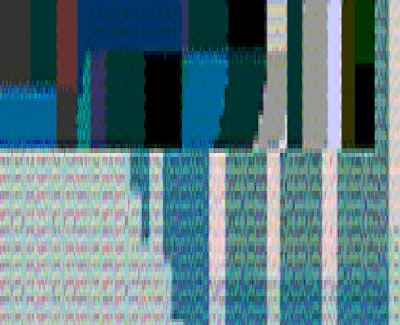I have been considering the options of multiple tempos as played simultaneously by multiple persons... all well and good, here is my first real example thereof.
The idea is that many potential variations on the same theme will happen throughout the course of the piece. If player 1 is playing their crotchets in time with player2's quaver then that is one possibility.
I imagine the possibilities depend on the players and what they consider 'syncronicity' to be.
As a variation on this theme I have been considering how to acheive this with electronic material. Using say 6 sequenced parts manipulated by 6 performers.
So far I have considered using the bpm control for this, possible problems with this are
- if two parts were say .5bpm apart, they could well sound in sync, but not for long. A real musician would inadvertently lock in and change their exact tempo for the appropriate approximation.
- the performer may have problem identifying their unique output. A real musician has a very obvious feedback mechanism.
- loops would be problematic for tempo changes, sequences would be easilier manipulated.
So perhaps a more stricter definition of starting tempo eg strict ratios of tempo. Then adjusting playback in a more limited way eg phrase length/ time signature (depending on software this could affect playback in a more straightforward way than tempo).
This has led me to a completely automated process, user inputs performance data (all sequence information).
Upon the start of the performance all parts would be (quite likely) unsyncronised.
Each part could compare it's trigger information with each other part individually, if it finds itself in sync with another part, both parts then consider themselves in sync and stay that way until all are syncronised ( there may be some sort of need for constant communication to create a space where the syncronised parts are still syncronised when they decide they are ie so they don't inadvertantly decide they've synced just after one has changed).
Possible methods of determining syncronisation are through trigger pulses, eg if a certain ratio are syncronised then das ist good.
Or actual audio analysis - this could be tricky :) perhaps some serious band-pass filtering and then considering beat frequencies. Again this probably would be best acheived comparing individual parts with each other.
Now to work out how to do it.
Thursday, 21 June 2007
mulitple simultaneous tempos
musings la
edward kelly
at
12:36 am
![]()
Labels: multiple tempi
Subscribe to:
Post Comments (Atom)


No comments:
Post a Comment